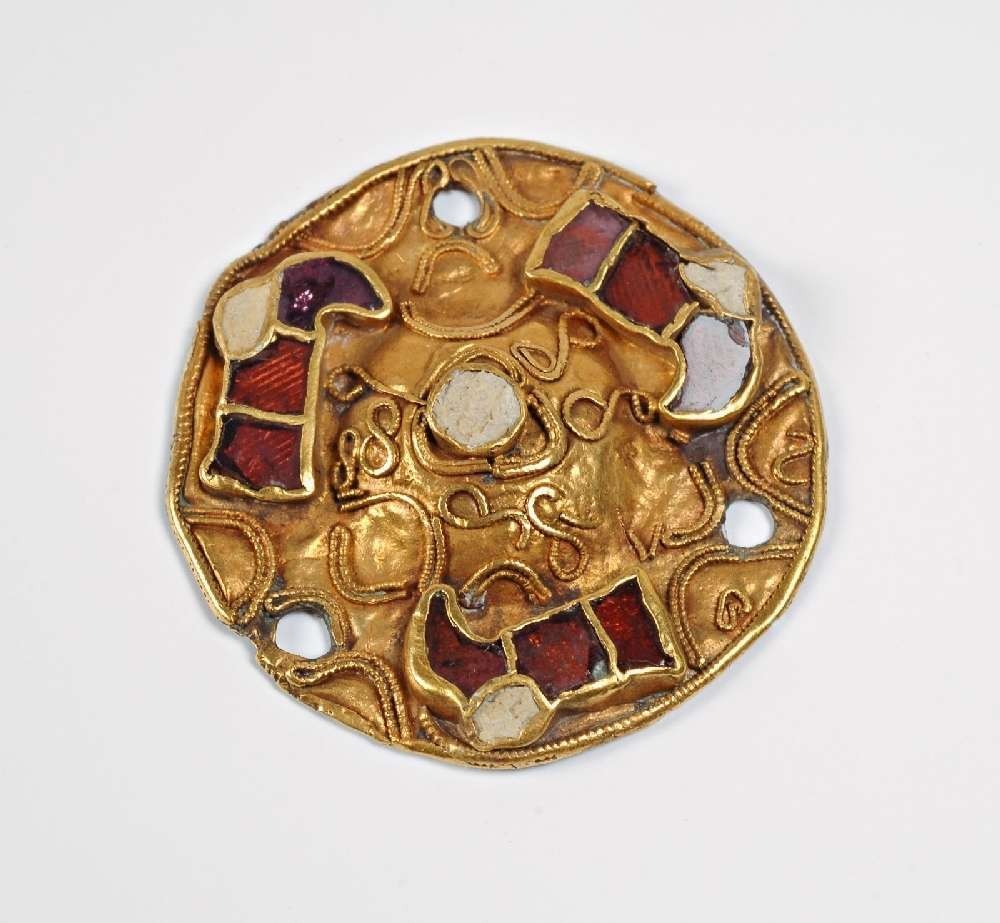COUNTS, GIFTS AND GLASS ART: THE GOLDEN MIDDLE AGES (Merovingers)
Although the Early Middle Ages are often referred to as a time of decline and decline, the rich grave goods from archaeological excavations paint a very different picture. Gold, silver, bronze and beautiful garnets paint the picture of the Early Middle Ages as a prosperous period. The large numbers and the good condition of the grave goods are special.
Maastricht was a so-called central place in the early Middle Ages: Merovingian kings had many possessions in and around Maastricht (former Roman state properties), they visited the city several times and crucial developments took place in Maastricht and the Meuse valley. Between the sixth and the end of the eighth century, a struggle for power took place in the Middle Meuse area, which can be read from the various archaeological sites and historical sources in this area and which had an impact on the entire Meuse-Meuse Euregion. Rhine. Maastricht was of crucial importance in the sixth century, when Monulfus perpetuated and expanded the veneration of Bishop Servatius – who is said to have been buried in the old Roman cemetery. It is even possible that Monulfus started this worship. From the second half of the sixth century, Maastricht was definitely an episcopal city.
The capital of the Merovingian Empire during the period between 450 and 750AD. was the northern French Metz. But when the Merovingian monarchs became puppet kings from the mid-seventh century onwards, the mayors of the court increasingly took over and prepared an almost silent seizure of power in the Middle Meuse region. By silent, we mean that it was a very gradual and 'imperceptible' takeover. At some point, the mayors of the court appointed the kings themselves (usually child kings), to avoid giving the impression that they were taking over power.
In the Merovingian period, people were both cremated and buried. If gifts were given at a cremation, they usually broke during the burning. Sometimes the urn was interred with ashes and grave goods were added to it. Many graves from the Merovingian period have also been found. In some of them grave goods have been found, in others not.
In Maastricht, during the construction of the Vrijthof parking garage, a large number of Merovingian graves were found. Not everyone received grave goods. In graves of simple people usually nothing or very little has been found, for example only a spindle. Important people were given several grave goods. Rich men with an important function were given a weapon into the grave. Many lances, axes, swords and shields have been found in Merovingian tombs. Archaeologists believe that a weapon in a grave indicates the high status of the deceased. The graves of women and girls can be recognized by jewelry: beaded necklaces and clothes pins. The beaded necklaces consist of a colorful collection of amber beads (a reddish, hard substance made from tree resin), transparent glass and frosted glass in all kinds of colors and combinations. The beaded necklaces were worn on their clothes by women. They pinned the chains with fibulae. Several types of fibulae have been found in Merovingian tombs: small pins in the shape of birds, disc fibulae of silver with inlay of almandine (red gemstone) and disc fibulae of gold filigree work. Necklaces have been found that do not only consist of colorful beads. Pierced Roman coins or a copper buckle were also hung on a chain.
Children's graves have also been found. The dimensions of these graves indicate this. As with the adult graves, the grave goods differ in size and value.
 Children of good descent were given a lot of rich grave goods, poor children were buried with little or no grave goods. Remarkably enough, 'adult' grave goods have been found in some children's graves, such as a spearhead. Archaeologists believe that these kinds of gifts should show the child's actual future career.
Children of good descent were given a lot of rich grave goods, poor children were buried with little or no grave goods. Remarkably enough, 'adult' grave goods have been found in some children's graves, such as a spearhead. Archaeologists believe that these kinds of gifts should show the child's actual future career.
Earthenware pots and dishes have been found in many graves, of both men and women. This probably contained food that was given to the deceased. The top edge of the pots is often decorated with grooves or stamps. Glass beakers have also been found in the richer tombs.
glass art
Glass was a rare burial gift in the richer tombs. Glass beads were often used in the beaded necklaces discussed earlier, but glass drinking cups and dishes have also been found. It is striking that during excavations much of the glassware comes out of the ground without damage. Due to the shape and technology, the glass cups and bowls are extremely sturdy.





